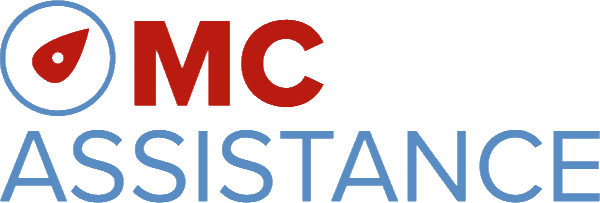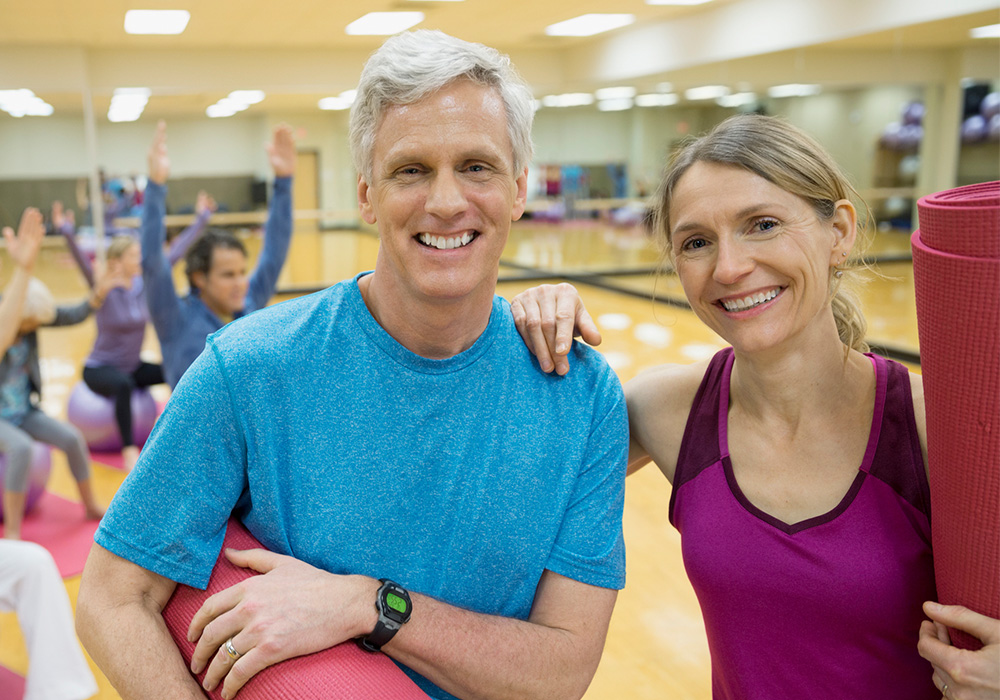An exercise program for your physical and mental health
Whether you’re living with myeloma or not, exercise is a vital component to physical and mental wellness. That’s why Myeloma Canada is proud to be partnering with REVIVE Physiotherapy & Exercise (www.hamontphysio.ca) on our new and exciting exercise/wellness program.
With the help of physiotherapist Alan Richter, discover how to improve your fitness, activate your blood flow, and better manage the pain and side effectsProblems that occur due to drugs used for disease treatment. Common side effects of cancer treatment are fatigue, nausea, vomiting, decreased blood cell counts, hair loss, and mouth sores. of myeloma and/or its treatments.
Our exercise program
We’re pleased to provide you with five (5) short InfoVideos and companion InfoSheets demonstrating the exercises our participants most recommended. Watch and follow along with the InfoVideos or consult the InfoSheets. Either way, these exercises are always at your fingertips and easily accessible for you to do from the comfort of your home, or wherever you choose – even at the park or on vacation!
Don’t be discouraged if you find your level of energy decreases following a light training. It’s completely normal to feel tired after physical exercise, (that’s also why exercise helps improve your sleep!). None of these exercises should cause you any sort of pain.
Please note: We highly recommend you consult with your doctor or healthcare professional before beginning this or any exercise program.
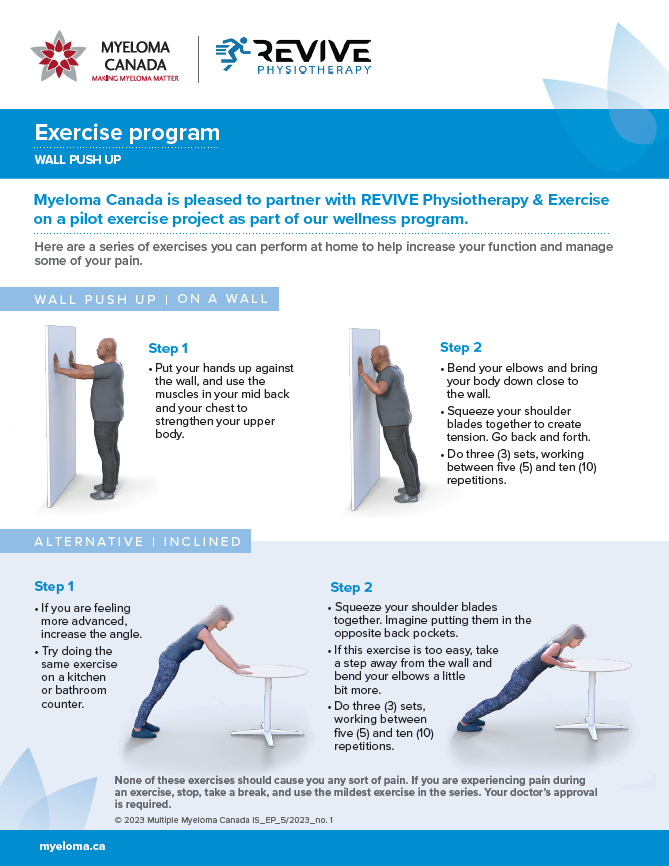
Wall push-up
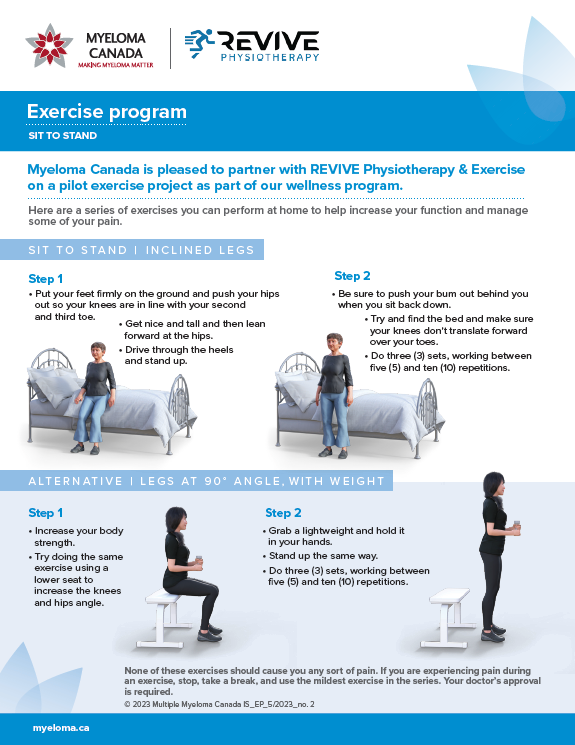
Sit to stand
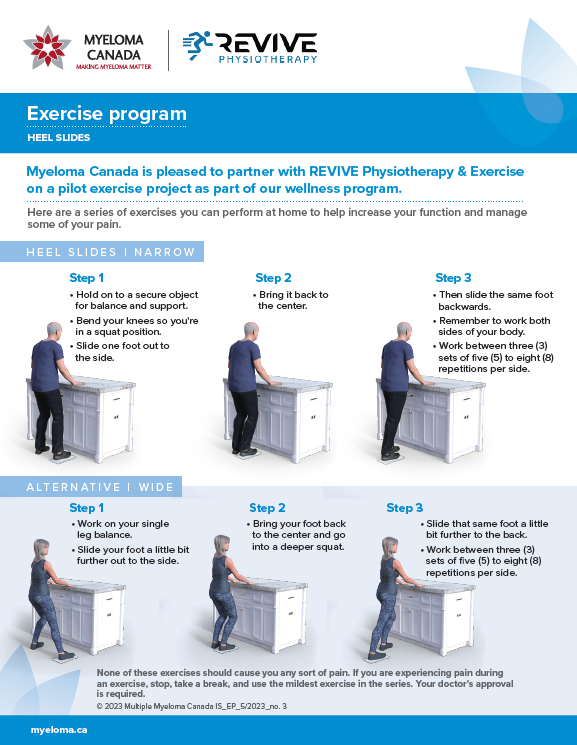
Heel slides
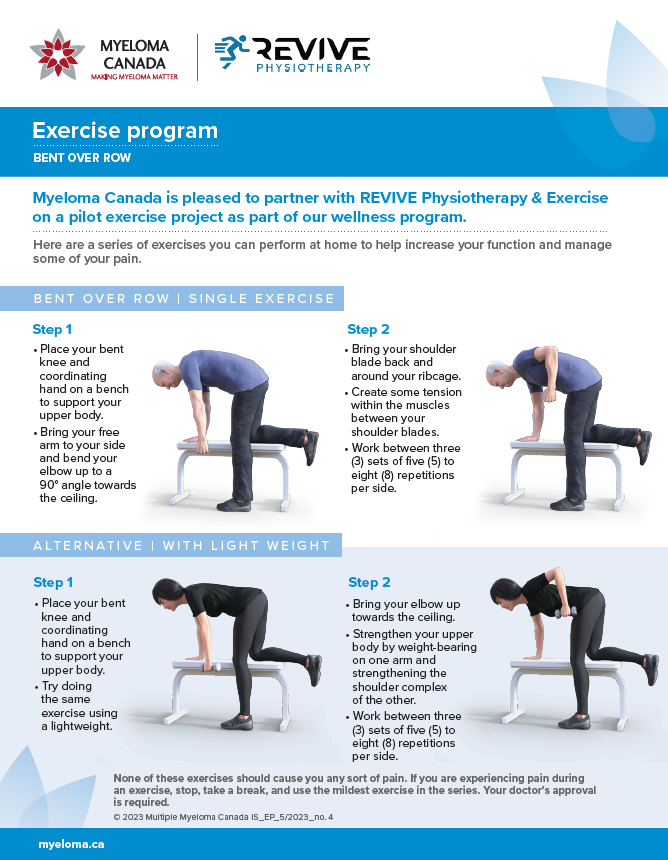
Bent over row
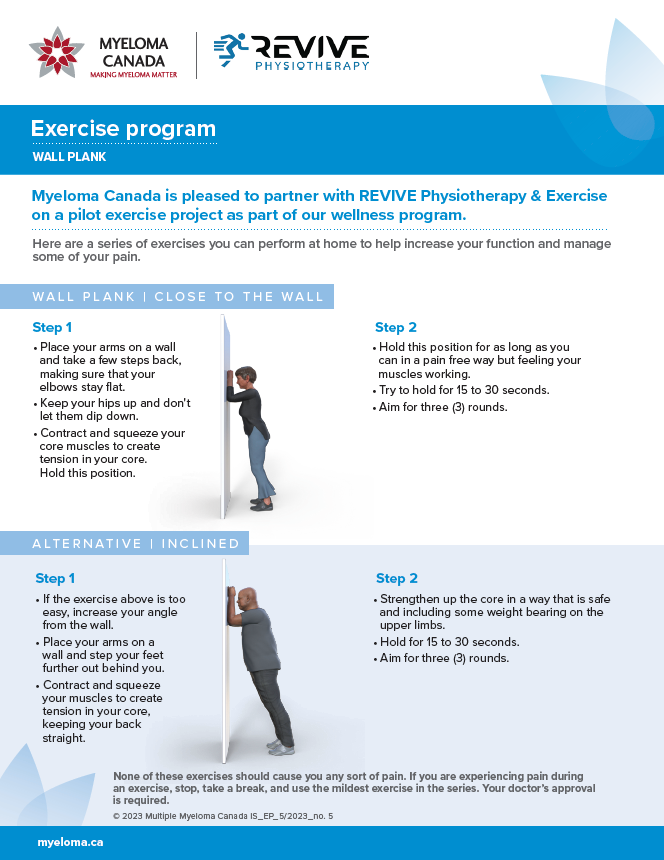
Wall plank
Program background
In the fall of 2022, we launched a 6-week pilot project to study the benefits of a light to moderate exercise routine for people living with myeloma.
The group consisted of male-presenting and female-presenting people with myeloma, between 62 and 78 years of age with varying physical and health conditions. We took into consideration the status of their journey: in treatment, in remission, experiencing a first relapseThe reappearance of signs and symptoms of a disease after a period of improvement.. As we also wanted to consider comorbidities, we were thankful to welcome two individuals each with a different stageThe extent of a cancer in the body. of AL light chain amyloidosisA condition in which myeloma light chains (Bence Jones proteins) are deposited in tissues and organs throughout the body. This occurs more commonly with lambda versus kappa Bence Jones proteins. In patients with amyloidosis, the light chain proteins bind to certain tissues such as heart, nerves and kidney rather than being excreted out of the body through the kidneys., a disorder related to myeloma, one of whom also had kidney disease.
Data collected before and after each exercise session showed that participants’ levels of pain were less than compared to before the start of the program, and all participants saw improvement in their endurance. As the program progressed, participants were able to execute the exercises with more ease in less time, and were able to increase the number of repetitions.


